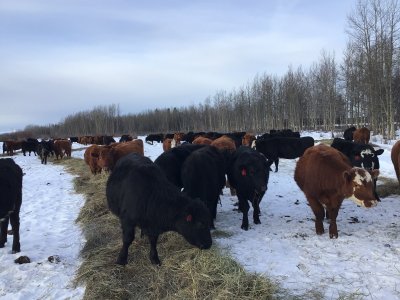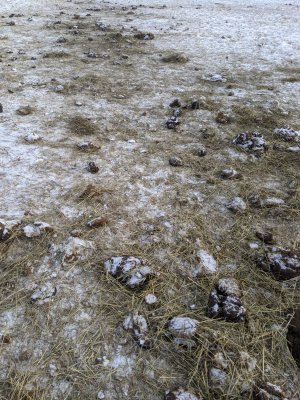Of course feed however you prefer - to each their own but I address what you point out my own ways so I don't see how I'd personally justify the extra yardage and more importantly time.
When feeding multiple qualities of hay I either roll out even amounts of two qualities for 2 days so all the cows have access to the top quality feed on day one. When snow makes unrolling impractical I feed all good bales or all lesser bales for each 2 day block instead of mixing.
I go to the cattle every day in a vehicle to check the waterer and monitor/address problems then.
View attachment 1426
That 30% waste figure gets thrown around a lot but I don't see it. It doesn't compute based on the rate of consumption or what my ration software says they need either. I use 15% for my figuring which has a safety margin built in - it's somewhere between 10 - 15%. Regardless - if the above is 30% waste I don't want to get to 10% there isn't much nutrition in those stems anyway - it does more good building soil than in their bellies
My herd's conception rate (less than 2% open) and weaning rate (96 %) last year indicate they're doing quite well too.



